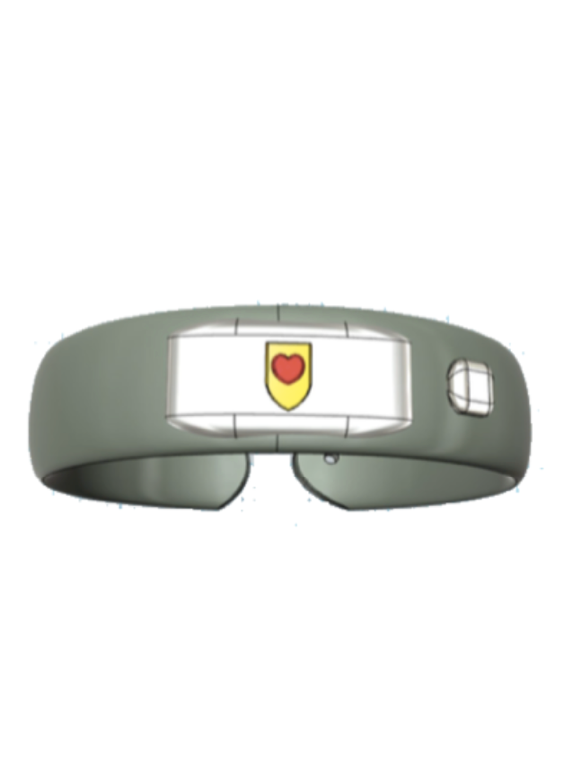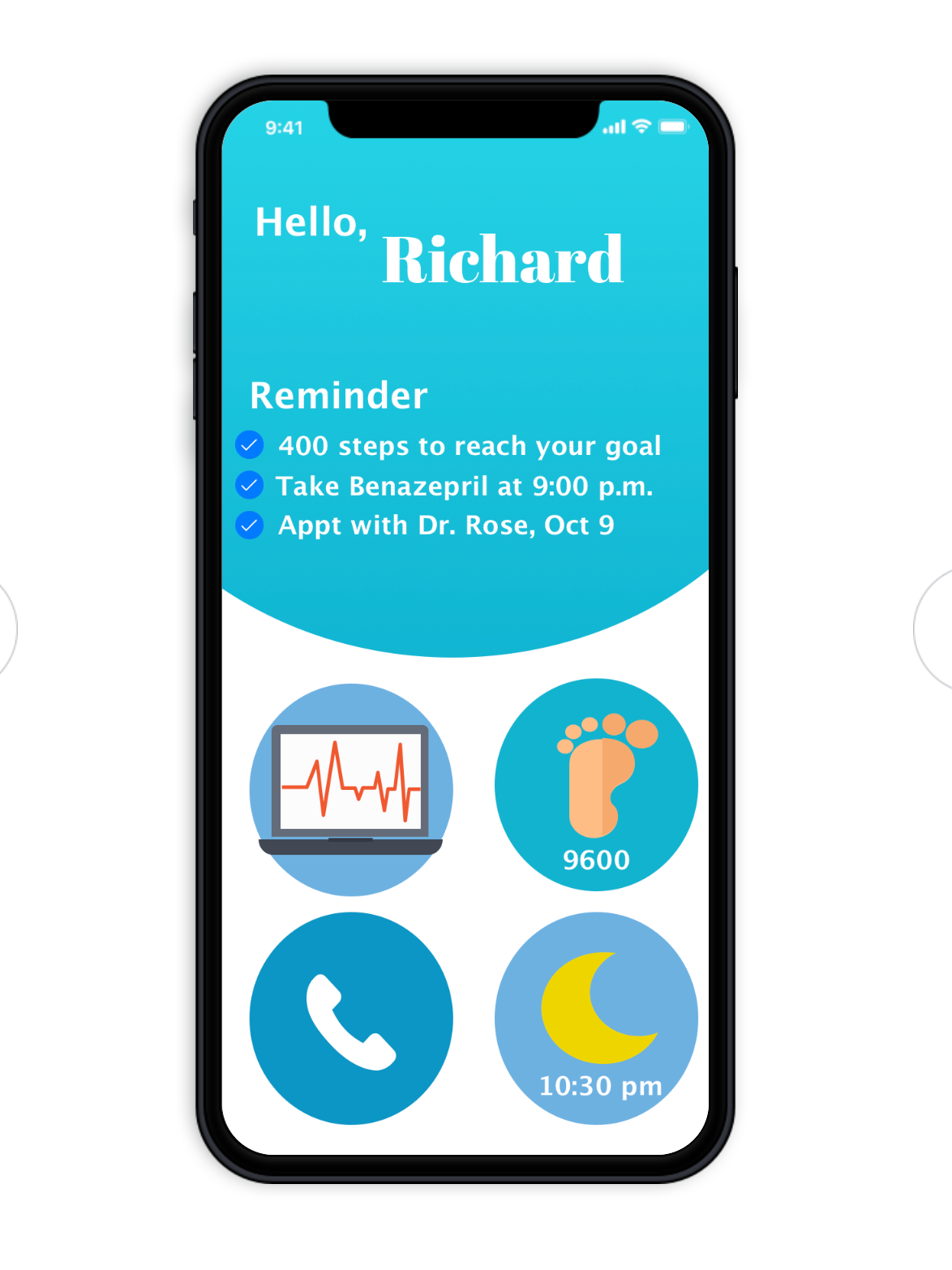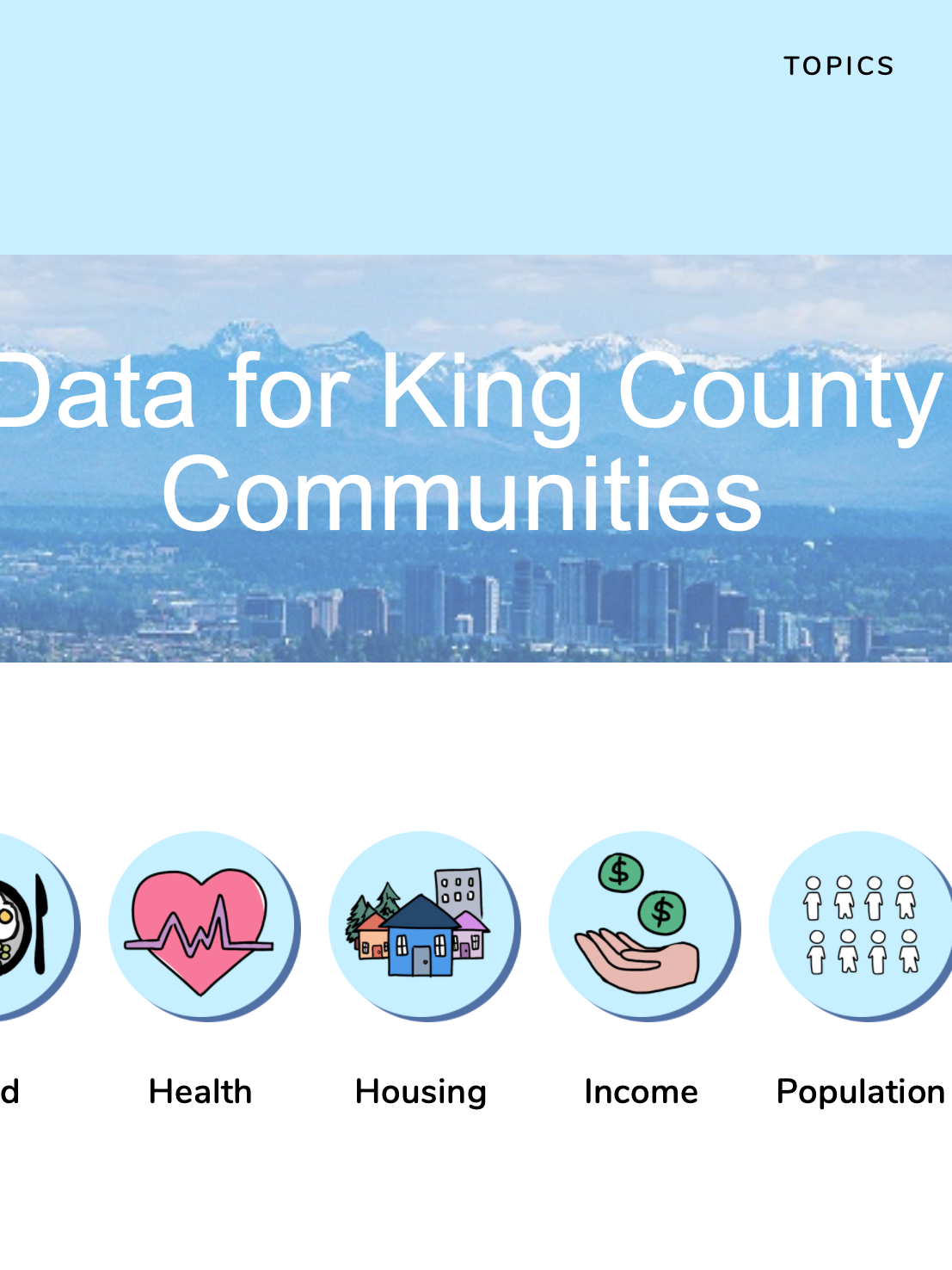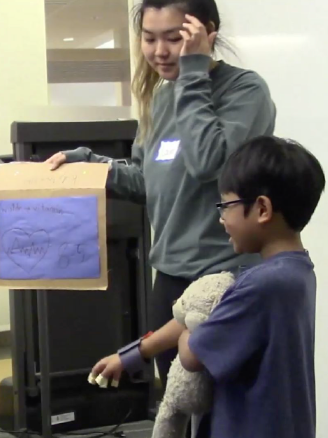SUMMARY
For most of the students, we usually take public transportation to commute. Many of us commute daily, not to mention that there are 397,000 people rode King County Metro transit average weekday (“Accountability Center”).
Thus, bus experience is very crucial, and bus stop waiting may be the
most important because it is where commuters start their experience.
I was curious about what do people feel about their waiting
experience at the bus stop, and how to improve their experience?
most important because it is where commuters start their experience.
I was curious about what do people feel about their waiting
experience at the bus stop, and how to improve their experience?
Individual Project
Duration: 7 weeks
Click to enlarge the image of my framework of analysis.
Thinking about 41% of University of Washington students commute by bus
(2016 YW Commuter Survey),
I have a design question,
"How Can We Improve the Experience of Waiting for Buses in Seattle?”
(2016 YW Commuter Survey),
I have a design question,
"How Can We Improve the Experience of Waiting for Buses in Seattle?”
FIELD RESEARCH
Deep Hanging Out Method (Baxter, 391):
I observed and took detailed notes of people waiting at the bus stops with my research question and focals points in mind to get a general census about how people’s experience for waiting for buses in Seattle.
I observed and took detailed notes of people waiting at the bus stops with my research question and focals points in mind to get a general census about how people’s experience for waiting for buses in Seattle.
The bus waiting system is divided into 8 focus areas, and each areas are different aspects of the system. Thus, I could get a holistic view of the system.
GOAL OF THE FIELD RESEARCH
ANSWER BELOW QUESTION TO GIVE AN OVERVIEW OF THE CONTEXT TO IMPROVE OVERALL EXPERIENCE AT SEATTLE
1. Who ride buses?
2. Where do bus stops?
3. Where do bus located?
4. How do people wait for the bus?
5. What does the bus look like?
2. Where do bus stops?
3. Where do bus located?
4. How do people wait for the bus?
5. What does the bus look like?
Monday Setting, it was raining and I had to hide inside a cafe to ensure that people did not see me taking notes of them.
FIELD RESEARCH SETTING
The three bus stops that I conducted is all at the University of Washington area:
Saturday: University Way NE & NE 41st ST
Sunday: University Way NE & NE 50th ST
Monday: 4247 University Way NE
Each of the bus stops that has either one or two shelters with structural aluminum frame and with each of the shelters, they have windscreen and a roof. I observed mostly students (undergraduates, graduate, PhD) and faculty (lecturer, professors, doctors) and some employees and employers who worked nearby at the bus stop.
Sunday: University Way NE & NE 50th ST
Monday: 4247 University Way NE
Each of the bus stops that has either one or two shelters with structural aluminum frame and with each of the shelters, they have windscreen and a roof. I observed mostly students (undergraduates, graduate, PhD) and faculty (lecturer, professors, doctors) and some employees and employers who worked nearby at the bus stop.
FINDINGS
01. Clean Bus Stop Is Needed
Though each bus stop has a garbage bin within a meter, the overall surrounding of the bus stop is unsatisfied, which led to either people have to clean themselves for clean space or they have to stand on the opposite side of the dirty part.
Aftermath of six birds fighting over the sandwich spilled on the floor
From the image shown on the left, you can see that there was some white leftovers on the floor.
It was a sandwich spilled a meter away from my Saturday's bus stop. Six birds (crows and seagulls) were fighting to eat it and two people had to move to another side of the shelter to get away from the bird fight.
On Monday's observation, there was an overloaded garbage bin right next to the bus stop and some trash spilled beside the bus stop. Two people tried to avoid the overloaded garbage bin so they waited at the other end of bus stop.
It was a sandwich spilled a meter away from my Saturday's bus stop. Six birds (crows and seagulls) were fighting to eat it and two people had to move to another side of the shelter to get away from the bird fight.
On Monday's observation, there was an overloaded garbage bin right next to the bus stop and some trash spilled beside the bus stop. Two people tried to avoid the overloaded garbage bin so they waited at the other end of bus stop.
02. INAPPROPRIATE USE OF BENCH HABIT CAUSED LIMITED SPACE
While the shelters have two benches, each bench can only fit two adults. A common sight during my 3 hours of field research was many people put their bags, drinks, or food on the bench, or even their feet unaware of the situation that they not only take up a large space and reduce the amount of people to sit that can sit.
Out of my 3 hours of field study from three bus stops, 9 different people put down their belongings or their feet on the bench and took up half of the bench.
One tragic observation....
A female sit on the bench and put her hand bag on the other side of bench. She was using her cellphone and did not see an elder who was using a walking cane wanting to sit on the bench. The elder just stood without saying anything until the female departed.
A female sit on the bench and put her hand bag on the other side of bench. She was using her cellphone and did not see an elder who was using a walking cane wanting to sit on the bench. The elder just stood without saying anything until the female departed.
03. PREFER OPEN SPACE MORE THAN PROTECTION
People did not like to stand very close to each other. My observation day were raining and even windy, but people stood away from the shelter due to several people were already in the shelter.
During my observation, there was an Asian female who was using her cellphone, and she moved to another side of the bus stop when another woman sit on the same side of bench. Then another male sat on the bench, and she stood up to move to the center of the shelter. When another male stood beside her, she slowly moved to the outer area of the shelter. Despite that she and her cellphone might get wet, she stood out of the shelter after four people were in the shelter. After 2 people left, she moved inward to the shelter. There were two similar incidents that after 5 people were in the shelter, the other individual moved to outer shelter. (The shelter could at least hold ten people.)
This picture shows the scene I was seeing where many people decided to stand outside while there were rooms at the shelter. Taken from WannaJoke.com
Next Step -> Semi-Formal Interview
Based on my field research results , I interviewed four commuters to validate my hypothesis from field research and asked their general opinions on the bus stop environments and space. Having semi-formal interview, I could explore everyone's has different priorities, concerns, and experiences, and had a holistically understanding of the situation.
MAIN QUESTION:
1. “Why did they want to move to the outer shelter when there were many people”
2. “Do they care the cleanliness of the bus stop”
HYPOTHESIS:
1. They prefer to remain a distance with the other commuters even if that means they have to wait in the rain.
2. They think bus environment is dirty and they were trying to stay away from the dirty area.
Based on my field research results , I interviewed four commuters to validate my hypothesis from field research and asked their general opinions on the bus stop environments and space. Having semi-formal interview, I could explore everyone's has different priorities, concerns, and experiences, and had a holistically understanding of the situation.
MAIN QUESTION:
1. “Why did they want to move to the outer shelter when there were many people”
2. “Do they care the cleanliness of the bus stop”
HYPOTHESIS:
1. They prefer to remain a distance with the other commuters even if that means they have to wait in the rain.
2. They think bus environment is dirty and they were trying to stay away from the dirty area.
FINDINGS
01. Annoyed about One Bus Away is Inaccurate
The first finding “One Bus Away App Is Not Accurate” is the most important because it affects the commuters’ routine, the commuters might miss the bus ride. As a result, it may ruin the as well as the mood.
“Sometimes the bus comes on time,
but most of the time the bus comes five minutes late and sometimes a late bus in 10 - 20 minutes .
Or sometimes I just missed the bus before knowing.” - P1
but most of the time the bus comes five minutes late and sometimes a late bus in 10 - 20 minutes .
Or sometimes I just missed the bus before knowing.” - P1
All of my participants used One Bus Away, a real-time transit information mobile app, to assist them in waiting for buses process. They were annoyed that the schedule is sometimes early or late and had to arrive several minutes before the estimated arrival time on One Bus Away.
“If it’s not accurate, then I get annoyed.... If there is an alternative (option of arriving to designated place), I will get the alternative." - P2
“If it’s not accurate, then I get annoyed.... If there is an alternative (option of arriving to designated place), I will get the alternative." - P2
One Bus Away does not give accurate results and gives the commuters wrong expectation, and as a result, they would likely to develop negative emotions.
Recommendation: Given all my participants used One Bus Away and thought that it was not accurate. The designers of bus app could improve by showing a range of estimated time, so the commuters know that they have to be there and will not expect the bus will come in that specific time. Not only showing a range of time will help with the expectation and will prevent them from missing the bus.
One Bus Away App
02. Bus Stop Is Not Clean Enough
Two of the three participants talked about dirty bus stops, so there is a possibility that the bus stop needs to be maintain more often.
I asked P1 about her feelings toward people putting their foot on the bench, she said,
“there are a lot of butt on the bench, so putting one foot down on the bench doesn’t matter. I already know that it isn’t cleaned.” - P1
“there are a lot of butt on the bench, so putting one foot down on the bench doesn’t matter. I already know that it isn’t cleaned.” - P1
“Bus stop is typically dirty. The bus stop is nasty and it looks like it haven't cleaned in months. I typically do not sit on the benches. It depends on several reasons. The main reason is that I don’t think it’s that clean." - P3
Recommendation: The image of the bus environment tends to be “dirty” or “not clean” and the commuters do not feel comfortable sitting on the bench, designers of the bus maintenance system can consider to try not only clean the bus stop in a bi-weekly basis, and post “cleaning history” on the windshield, so the commuters knows that the bus stop has been cleaned and may feel more comfortable at the bus stops.
03. Bus Undercover (shelter) do not provide enough space
From my field research, the commuters had a tendency to avoid the crowded area. After my interviews, I validated that the commuters were trying to avoid the crowd. My participants expressed that they tried to stand on the farthest end to give themselves and others more spaces.
P1 reflected her last bus waiting experience. Even though she usually liked to stand in the shekter, but she usually would wait outside of the shelter until most people left the shelter.
“I tried to... stay away. It was a crowded area, so I did not want to stand [at the undercover] and sometimes that I waited for one of the bus to come, so that a bunch of people will go on [to the bus].... I like [to stand in] the undercover better, personal preference.”
When I mentioned about having a rainy day and a crowded of people in the shelter, all my participants all said that they would try to stand outside of the shelter.
“I usually will avoid the super crowded area even if it’s raining because I have the hood on.” - P1
“If I have my umbrella with me, I would go outside and if I don’t, I might go inside depending on how spread out the people are.” -P2
“ I will usually take out my umbrella and stand there. I don’t want to make other people uncomfortable and bargain in there, so I will just take out my umbrella and be in my little zone.” -P3
Although my 3 participants like to stay inside the undercover, they did not stay inside most of the time due to “do not want to touch others” or “feels awkward”
or “not invading others personal space.”
or “not invading others personal space.”
Recommendation: Given my findings that the commuters tried to avoid a crowd and they would choose to stand outside of the undercover while raining, designers might consider to expand some of the bus stops. For example, increasing the size of the bus stop, so the commuters will feel more comfortable staying in the shelter and have better satisfaction in waiting for the bus.
Next Step -> Survey
The goal for this survey is to collect quantitative data to support my qualitative findings from the field research and interviews.
My survey is served to confirm whether my findings from my field research and interviews are generalizable to a larger population. I want to explore whether other commuters have experienced the incident that bus driver did not see the individual waiting and did not stop at the bus stop and would like to know what are the priority issues that people care more because one issue might take a long time to improve. Thus, designers should try to solve for the top priority issues first.
CREATE SURVEYS BASED ON THOSE 5 RESEARCH QUESTIONS
1. Do people feel crowded in the Seattle bus stops? (confirm)
2. How important is personal space when waiting at bus stop? (elaborate)
3. How satisfied are the commuters to the size of the bus stop environment (elaborate)?
4. How do cleanliness environment impact the waiting experience? (elaborate)
5. How satisfied are the real-time bus schedule application and the bus schedule paper? (elaborate)
2. How important is personal space when waiting at bus stop? (elaborate)
3. How satisfied are the commuters to the size of the bus stop environment (elaborate)?
4. How do cleanliness environment impact the waiting experience? (elaborate)
5. How satisfied are the real-time bus schedule application and the bus schedule paper? (elaborate)
Survey Respondent Criteria
My ideal participants are those who ride bus weekly because those are the one who need to ride buses and have may have more thoughts on the bus stop waiting experiences. However, I am also gathering more responses from those who do not ride buses as often as weekly basis because there may be reasons that they do not ride buses as often. Thus, I also would like to explore the reason behind it.
SURVEY RESULT WITH TABLEAU VISUALIZATION
Below is the survey result from a total of 50 participants.
Each visualizations represents an idea of improvement.
Each visualizations represents an idea of improvement.
01. TOP ISSUE TO BE ADDRESSED:
What are the first priority that they care the most regarding to the bus experience?
Accuracy is the most important (31/50) responded Accuracy of Bus Schedule,
followed by Cleanliness of bus stop and having enough personal space at the bus stop.
What are the first priority that they care the most regarding to the bus experience?
Accuracy is the most important (31/50) responded Accuracy of Bus Schedule,
followed by Cleanliness of bus stop and having enough personal space at the bus stop.
Recommendation:
1. Prioritize accuracy of bus schedule over the cleanliness, bench availabilities, personal space issue (having enough size)
2. Put more time and money to have more accurate bus schedule, such as put a real time tracker on each bus stop to provide a positive experience for commuters.
2. Put more time and money to have more accurate bus schedule, such as put a real time tracker on each bus stop to provide a positive experience for commuters.
02. ONE-BUS AWAY IS THE MOST FREQUENT APP FOR BUS TRANSIT INFO
35 / 50 survey respondents used One Bus Away and 23 / 35 expressed accuracy is the most important out of the other issues.
My participant expressed that they had to stay alert all the time since the application is inaccurate. They had to make sure to look up from whatever they were doing to ensure they did not miss the bus.
35 / 50 survey respondents used One Bus Away and 23 / 35 expressed accuracy is the most important out of the other issues.
My participant expressed that they had to stay alert all the time since the application is inaccurate. They had to make sure to look up from whatever they were doing to ensure they did not miss the bus.
One of my participant said she even restricted herself from using cellphones. I asked her what she usually did waiting at the bus stop
"turn my head to the direction that I know where buses are coming. I don't do much. I tried not to use my cellphone because I will miss things that are going on."
In addition, from my field research, I noticed that it may be hard to see when the bus arrives while there are many vehicles that may block the sight. I had two people that also mentioned that the bus visibility is an issue.
Recommendation
Have a real-time schedule board with audio system that will alert the commuters when the bus comes, so the commuters do not need to constantly checking whether the bus comes or not or will tend not to miss the bus.
Have a real-time schedule board with audio system that will alert the commuters when the bus comes, so the commuters do not need to constantly checking whether the bus comes or not or will tend not to miss the bus.
From the interview that the participants tend to have a favorite bus stop waiting spot. Thus, I would like to make a hypothesis on the linkage of the importance of the personal space and their usual bus-waiting spot.
03. PERSONAL SPACE IS ALSO AN IMPORTANT CRITERIA FOR BUS WAITING EXPERIENCE
03. PERSONAL SPACE IS ALSO AN IMPORTANT CRITERIA FOR BUS WAITING EXPERIENCE
Many 22/50 (44%) responded that they would stand under the shelter, near the edge of the bus stop. Within the population who likes to stand near the edge of the bus stop, 59% think personal space is one of the most important criteria of bus waiting experience.
Recommendation
1. Divide the entire bus stop into small parts, so commuters can have the edgy feeling, which they tend to prefer.
2. Put a small undercover at each bus stop sign to protect the commuters who stand outside near the bus stop sign from the rain
One of the important things to note is that the interview participants and survey respondents
have been screened to provide a more accurate result. However, the scope of the survey
participants and the interview participants are limited to University of Washington faculty
and students, so it might be biased because student group might have different priorities than
other groups.
The strength of the work is the research has been carefully planned out and is structured. The
research has been split in 3 stages that I did field research, then interview, and survey to
validate the result from the prior research. For example, my interview questions are guided
from the field research and the survey questions are guided from the surveys.
REFLECTION
I am very surprised all my interview participants wanted to add more stories, when I asked them if they have any last thoughts before the interviews were over. All my participants were very willing to share her or his thoughts on the bus waiting experiment even when they were on a tight schedule and might run late for the meeting.
For survey responses, I did not ask questions to write a short response on their bus waiting experience. I did not provide any rewards for completing the surveys, the respondents will be reluctant to take the surveys if they were asked to write short responses. However, from the interviewers' reactions, I anticipated that many people would have a strong opinions on their bus waiting experiences.
From my interviews' sound answers, I realized I touched on an important topic and bus stop experiment may affect their moods and their schedules. Thus, I suggest the King County Public Transportation to review this report despite the recommendation may be hard to achieve.
For the next field study, I want to do more observations and have more interviews to increase the confidence levels. In addition, I will interview the person at the bus stop because my participants had a tougher time describing the environment, so interviewing them at the bus stop could be easier to describe and could help to refresh their memories.
For survey responses, I did not ask questions to write a short response on their bus waiting experience. I did not provide any rewards for completing the surveys, the respondents will be reluctant to take the surveys if they were asked to write short responses. However, from the interviewers' reactions, I anticipated that many people would have a strong opinions on their bus waiting experiences.
From my interviews' sound answers, I realized I touched on an important topic and bus stop experiment may affect their moods and their schedules. Thus, I suggest the King County Public Transportation to review this report despite the recommendation may be hard to achieve.
For the next field study, I want to do more observations and have more interviews to increase the confidence levels. In addition, I will interview the person at the bus stop because my participants had a tougher time describing the environment, so interviewing them at the bus stop could be easier to describe and could help to refresh their memories.
Footnote:
Observation Notes for observation:
Participants in this study were the Seattle commuters who rode buses, particular bus number 45, 71, 73, or 373. The age of the participants range variously, from college students to elders who had grey hair and needed a cane to walk. The participants in this study were the commuters who waited and rode the bus at the Ave of the University of Washington. I’ve also observed a group of participant who were not commuters, but they used bus stop as their wind shield or rain shield.
I recorded qualitative field notes consisting of the commuters behaviors, specifically the demographics of the commuters, their interactions in the bus stop, the possessions they have, facial emotions, and some quantitative field notes including the time that some commuters waited, the number of people having food or drink while waiting, the number of people stand inside the shelter and the amount of people who do not. I also noted the built environment, how is the bus stop laid out and where do those people stand in the bus stop,
After observing and cleaning my field notes, I copied each action or thought on a posted-it notes and conducted affinity analysis. First, I put all the post-its on the board and started to group them with the similar ideas. Then I labeled all the findings.








